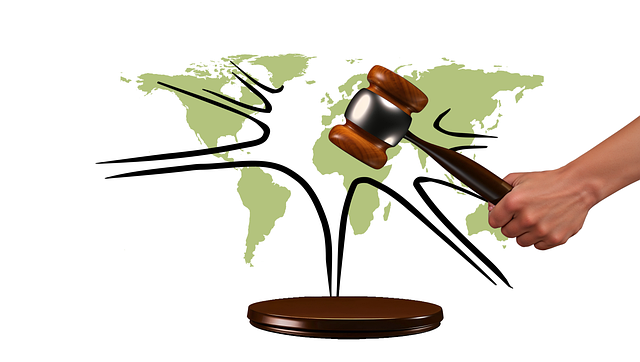Oregon's child welfare system is a multi-faceted approach prioritizing child safety and rights, with a complex web of legal processes involving DHS, families, courts, and social workers. Parents and guardians have significant rights during this process, including involvement in cases, legal representation, and fair hearings. Social workers expertly navigate these laws to protect vulnerable children, while courts determine the best course of action through adjudication and disposition phases. Post-case management ensures stable environments for families, aiming to reunite or explore alternative solutions, all while respecting everyone's rights through effective navigation of child welfare laws.
In Oregon, understanding the complex web of child welfare laws is crucial for both parents and guardians, as well as those seeking support or involved in protection cases. This comprehensive guide navigates Oregon’s child welfare system, from initial involvement to post-case management. We explore legal processes, parental rights, social worker roles, court procedures, and long-term support, offering insights into every step of the journey. By familiarizing yourself with these processes, you can better ensure a fair outcome for all involved parties.
- Understanding Oregon's Child Welfare System: An Overview
- Legal Processes: When and How Are Children Involved?
- Rights of Parents and Guardians: What You Need to Know
- The Role of Social Workers in Child Protection Cases
- Court Involvement: Adjudication, Disposition, and Supervision
- Post-Case Management: Reunification and Long-Term Support
Understanding Oregon's Child Welfare System: An Overview

Oregon’s child welfare system is designed to protect and nurture at-risk children while ensuring their fundamental rights are upheld. Navigating child welfare laws involves understanding a complex web of procedures aimed at safety, placement, and well-being. The process begins with reports of suspected abuse or neglect, which trigger an investigation by the Department of Human Services (DHS). If substantiated, DHS works collaboratively with families to create service plans, offering resources and support to address underlying issues.
The system prioritizes family preservation whenever possible, but in cases where a child’s safety is at risk, they may be placed in temporary or permanent foster care. Legal processes involve court hearings, where the goal is to make informed decisions regarding a child’s future, considering the best interests of the child while also respecting parental rights. This involves extensive documentation, evidence collection, and legal representation for both families and children involved.
Legal Processes: When and How Are Children Involved?

When a child’s safety and well-being are at risk, Oregon’s child welfare system steps in to protect them. Navigating child welfare laws is a complex process involving various stakeholders, including parents or guardians, child protection services, and the court system. The involvement of children in these legal processes is carefully managed to ensure their best interests are prioritized while respecting their rights.
Children may be directly involved in legal proceedings when there’s reasonable cause to believe they’re experiencing abuse, neglect, or dependency. This typically involves hearings where evidence is presented, and decisions regarding temporary or permanent guardianship, adoption, or other dispositions are made. The process aims to provide a safe and stable environment while also offering support and resources to families to help them reunify or develop alternative plans for the child’s future.
Rights of Parents and Guardians: What You Need to Know

In Oregon, parents and guardians have specific rights and protections when it comes to child welfare and legal processes. Understanding these rights is crucial for effectively navigating the system. One key right is the ability to be informed and involved in any case that affects their child, including receiving timely notices and having access to all relevant information. Parents also have the right to retain legal counsel to help them understand their options and represent their interests during proceedings.
Additionally, they can request a fair hearing if they disagree with any decisions made by child welfare agencies. This process allows for an open discussion of the facts and provides an opportunity to present evidence that may impact the outcome. Navigating child welfare laws can be complex, so it’s essential for parents and guardians to be aware of their rights and seek guidance when necessary to ensure the best possible outcomes for their family.
The Role of Social Workers in Child Protection Cases

Social workers play a pivotal role in protecting and advocating for vulnerable children involved in Oregon’s child welfare system. Their expertise lies in navigating the complex web of child welfare laws, policies, and procedures to ensure the best interests of the child are at the forefront of every decision. These professionals are often the first line of defense, receiving referrals from various sources, such as schools, hospitals, or concerned neighbors, when a child’s safety and well-being are suspected to be at risk.
Equipped with their training and knowledge, social workers conduct thorough investigations, gathering evidence and interviews to assess the situation. They work collaboratively with families, offering support, resources, and guidance while also making recommendations for necessary interventions. Their goal is to keep families together whenever possible, but they are also prepared to initiate legal processes, including petitioning for custody or guardianship, if a child’s safety remains a concern.
Court Involvement: Adjudication, Disposition, and Supervision

In Oregon, court involvement is a significant aspect of the child welfare process, aiming to protect and ensure the well-being of vulnerable children. When a child is involved in the welfare system, the court takes on a crucial role in adjudicating the case and determining the best course of action. Adjudication is the initial legal process where evidence is presented, and the court decides whether the allegations of abuse or neglect are true. This step is vital for navigating child welfare laws, as it establishes the facts and sets the groundwork for subsequent decisions.
Following adjudication, the court moves towards disposition, which involves deciding on a plan for the child’s future. Disposition orders can range from returning the child to their parents with specific conditions to placing them in foster care or adopting an alternative permanent living arrangement. The goal is always to promote stability and meet the child’s needs. During this period, courts also order supervision, where trained professionals monitor the family’s progress and ensure compliance with court-mandated services. This ongoing involvement helps maintain a safe and supportive environment for the child while exploring long-term solutions.
Post-Case Management: Reunification and Long-Term Support

After a case of child welfare intervention, effective post-case management is crucial for ensuring the well-being and long-term success of both the child and their family. The goal during this phase is to facilitate reunification or, if that’s not possible, establish alternative arrangements while providing ongoing support. This process involves navigating complex legal frameworks to ensure the rights of all parties are respected.
Social workers play a vital role in helping families navigate child welfare laws, offering guidance and resources for long-term stability. This may include assisting with case planning, connecting families to community resources, and supporting them as they transition from state care or foster placements. The ultimate aim is to empower families to build resilient and healthy environments where children can thrive.






